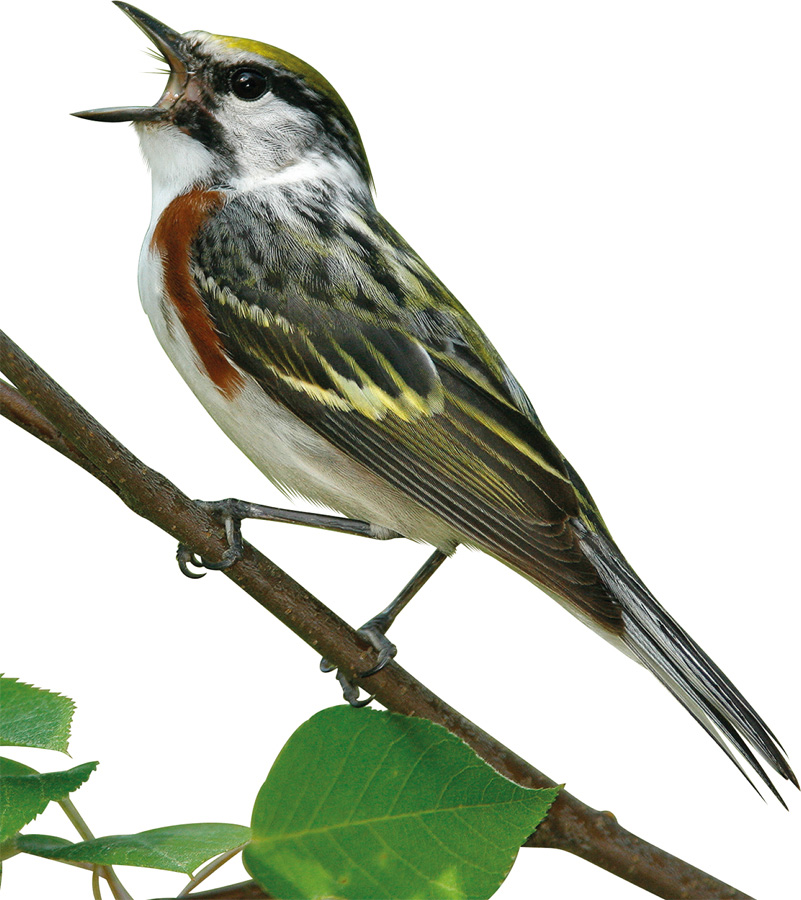Setophaga pensylvanica

male
The Chestnut-sided Warbler is a distinctively marked songbird. The sexes are subtly dissimilar. Adult summer males have a streaked black and white back and nape, and black wings with two white wingbars. The head pattern comprises a yellow crown, a black eye stripe and “mustache,” and an otherwise white face. The underparts are mostly white but with chestnut flanks. Adult summer females are similar but less colorful overall, with a streaked crown and less chestnut on the flanks. Adults in fall are less colorful than their summer counterparts, and have much less chestnut on the flanks, gray-green upperparts, a gray face and throat, and a white eyering. Immatures are similar to a fall adult but with no chestnut on the flanks.
The Chestnut-sided Warbler is present as a breeding species in northeast North America, mainly from April to August. It spends the rest of the year in Central America. It is an active species that often forages for insects low in bushes, making it easy to observe.

female

immature
FACT FILE
LENGTH 5 in (12.5 cm)
FOOD Invertebrates
HABITAT Secondary-growth woodland
STATUS Widespread and common summer visitor
VOICE Song is a descending series of sweet whistles, swee-si-si, tsi-tsuu swee-sa. Call is a sharp tchhup
![]()
